Word Problems on Sets
Word problems on sets are solved here to get the basic ideas how to use the properties of union and intersection of sets.
Solved basic word problems on sets:
1. Let A and B be two finite sets such that n(A) = 20, n(B) = 28 and n(A ∪ B) = 36, find n(A ∩ B).
Solution:
Using the formula n(A ∪ B) = n(A) + n(B) - n(A ∩ B).
then n(A ∩ B) = n(A) + n(B) - n(A ∪ B)
= 20 + 28 - 36
= 48 - 36
= 12
2. If n(A - B) = 18, n(A ∪ B) = 70 and n(A ∩ B) = 25, then find n(B).
Solution:
Using the formula n(A∪B) = n(A - B) + n(A ∩ B) + n(B - A)
70 = 18 + 25 + n(B - A)
70 = 43 + n(B - A)
n(B - A) = 70 - 43
n(B - A) = 27
Now n(B) = n(A ∩ B) + n(B - A)
= 25 + 27
= 52
Different types on word problems on sets:
3. In a group of 60 people, 27 like cold drinks and 42 like hot drinks and each person likes at least one of the two drinks. How many like both coffee and tea?
Solution:
Let A = Set of people who like cold drinks.
B = Set of people who like hot drinks.
Given
(A ∪ B) = 60 n(A) = 27 n(B) = 42 then;
n(A ∩ B) = n(A) + n(B) - n(A ∪ B)
= 27 + 42 - 60
= 69 - 60 = 9
= 9
Therefore, 9 people like both tea and coffee.
4. There are 35 students in art class and 57 students in dance class. Find the number of students who are either in art class or in dance class.
• When two classes meet at different hours and 12 students are enrolled in both activities.
• When two classes meet at the same hour.
Solution:
n(A) = 35, n(B) = 57, n(A ∩ B) = 12
(Let A be the set of students in art class.
B be the set of students in dance class.)
(i) When 2 classes meet at different hours n(A ∪ B) = n(A) + n(B) - n(A ∩ B)
= 35 + 57 - 12
= 92 - 12
= 80
(ii) When two classes meet at the same hour, A∩B = ∅ n (A ∪ B) = n(A) + n(B) - n(A ∩ B)
= n(A) + n(B)
= 35 + 57
= 92
Further concept to solve word problems on sets:
5. In a group of 100 persons, 72 people can speak English and 43 can speak French. How many can speak English only? How many can speak French only and how many can speak both English and French?
Solution:
Let A be the set of people who speak English.
B be the set of people who speak French.
A - B be the set of people who speak English and not French.
B - A be the set of people who speak French and not English.
A ∩ B be the set of people who speak both French and English.
Given,
n(A) = 72 n(B) = 43 n(A ∪ B) = 100
Now, n(A ∩ B) = n(A) + n(B) - n(A ∪ B)
= 72 + 43 - 100
= 115 - 100
= 15
Therefore, Number of persons who speak both French and English = 15
n(A) = n(A - B) + n(A ∩ B)
⇒ n(A - B) = n(A) - n(A ∩ B)
= 72 - 15
= 57
and n(B - A) = n(B) - n(A ∩ B)
= 43 - 15
= 28
Therefore, Number of people speaking English only = 57
Number of people speaking French only = 28
Word problems on sets using the different properties (Union & Intersection):
6. In a competition, a school awarded medals in different categories. 36 medals in dance, 12 medals in dramatics and 18 medals in music. If these medals went to a total of 45 persons and only 4 persons got medals in all the three categories, how many received medals in exactly two of these categories?
Solution:
Let A = set of persons who got medals in dance.
B = set of persons who got medals in dramatics.
C = set of persons who got medals in music.
Given,
n(A) = 36 n(B) = 12 n(C) = 18
n(A ∪ B ∪ C) = 45 n(A ∩ B ∩ C) = 4
We know that number of elements belonging to exactly two of the three sets A, B, C
= n(A ∩ B) + n(B ∩ C) + n(A ∩ C) - 3n(A ∩ B ∩ C)
= n(A ∩ B) + n(B ∩ C) + n(A ∩ C) - 3 × 4 ……..(i)
n(A ∪ B ∪ C) = n(A) + n(B) + n(C) - n(A ∩ B) - n(B ∩ C) - n(A ∩ C) + n(A ∩ B ∩ C)
Therefore, n(A ∩ B) + n(B ∩ C) + n(A ∩ C) = n(A) + n(B) + n(C) + n(A ∩ B ∩ C) - n(A ∪ B ∪ C)
From (i) required number
= n(A) + n(B) + n(C) + n(A ∩ B ∩ C) - n(A ∪ B ∪ C) - 12
= 36 + 12 + 18 + 4 - 45 - 12
= 70 - 57
= 13
Apply set operations to solve the word problems on sets:
7. Each student in a class of 40 plays at least one indoor game chess, carrom and scrabble. 18 play chess, 20 play scrabble and 27 play carrom. 7 play chess and scrabble, 12 play scrabble and carrom and 4 play chess, carrom and scrabble. Find the number of students who play (i) chess and carrom. (ii) chess, carrom but not scrabble.
Solution:
Let A be the set of students who play chess
B be the set of students who play scrabble
C be the set of students who play carrom
Therefore, We are given n(A ∪ B ∪ C) = 40,
n(A) = 18, n(B) = 20 n(C) = 27,
n(A ∩ B) = 7, n(C ∩ B) = 12 n(A ∩ B ∩ C) = 4
We have
n(A ∪ B ∪ C) = n(A) + n(B) + n(C) - n(A ∩ B) - n(B ∩ C) - n(C ∩ A) + n(A ∩ B ∩ C)
Therefore, 40 = 18 + 20 + 27 - 7 - 12 - n(C ∩ A) + 4
40 = 69 – 19 - n(C ∩ A)
40 = 50 - n(C ∩ A) n(C ∩ A) = 50 - 40
n(C ∩ A) = 10
Therefore, Number of students who play chess and carrom are 10.
Also, number of students who play chess, carrom and not scrabble.
= n(C ∩ A) - n(A ∩ B ∩ C)
= 10 – 4
= 6
Therefore, we learned how to solve different types of word problems on sets without using Venn diagram.
● Set Theory
● Finite Sets and Infinite Sets
● Problems on Intersection of Sets
● Problems on Complement of a Set
● Problems on Operation on Sets
● Venn Diagrams in Different Situations
● Relationship in Sets using Venn Diagram
● Union of Sets using Venn Diagram
● Intersection of Sets using Venn Diagram
● Disjoint of Sets using Venn Diagram
● Difference of Sets using Venn Diagram
8th Grade Math Practice
From Word Problems on Sets to HOME PAGE
Didn't find what you were looking for? Or want to know more information about Math Only Math. Use this Google Search to find what you need.
Recent Articles
-
How to Do Long Division? | Method | Steps | Examples | Worksheets |Ans
Apr 20, 25 11:46 AM
As we know that the division is to distribute a given value or quantity into groups having equal values. In long division, values at the individual place (Thousands, Hundreds, Tens, Ones) are dividend… -
Word Problems on Division | Examples on Word Problems on Division
Apr 20, 25 11:17 AM
Word problems on division for fourth grade students are solved here step by step. Consider the following examples on word problems involving division: 1. $5,876 are distributed equally among 26 men. H… -
Subtraction of 4-Digit Numbers | Subtract Numbers with Four Digit
Apr 20, 25 10:27 AM
We will learn about the subtraction of 4-digit numbers (without borrowing and with borrowing). We know when one number is subtracted from another number the result obtained is called the difference. -
Subtraction without Regrouping |4-Digit, 5-Digit & 6-Digit Subtraction
Apr 20, 25 10:25 AM
We will learn subtracting 4-digit, 5-digit and 6-digit numbers without regrouping. We first arrange the numbers one below the other in place value columns and then subtract the digits under each colum… -
Worksheets on Missing Numbers from 1 to 20 | Counting Missing Numbers
Apr 20, 25 10:17 AM
Printable worksheets on missing numbers from 1 to 20 help the kids to practice counting of the numbers.

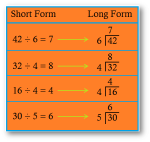
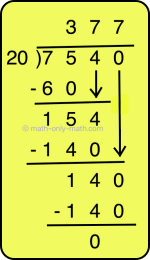
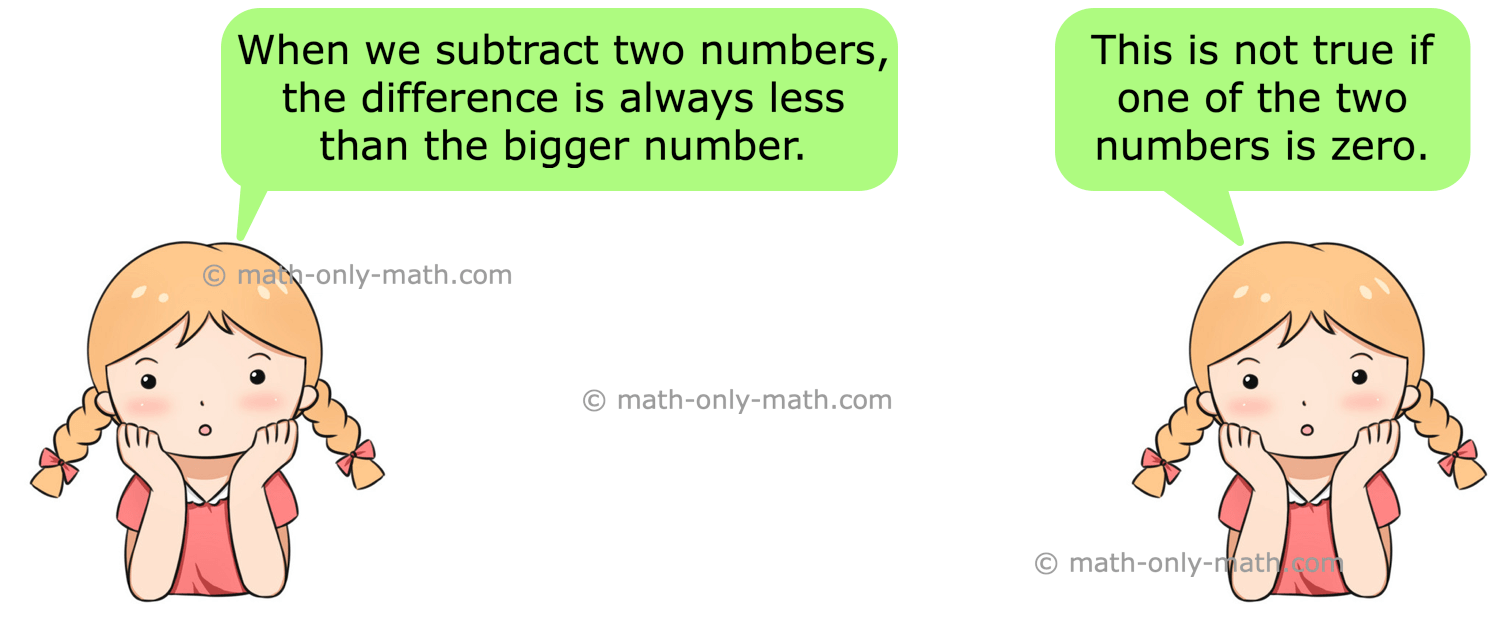
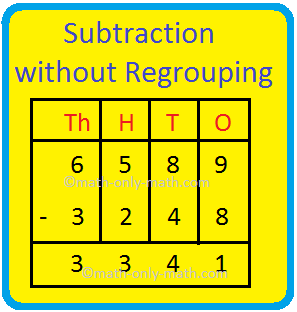
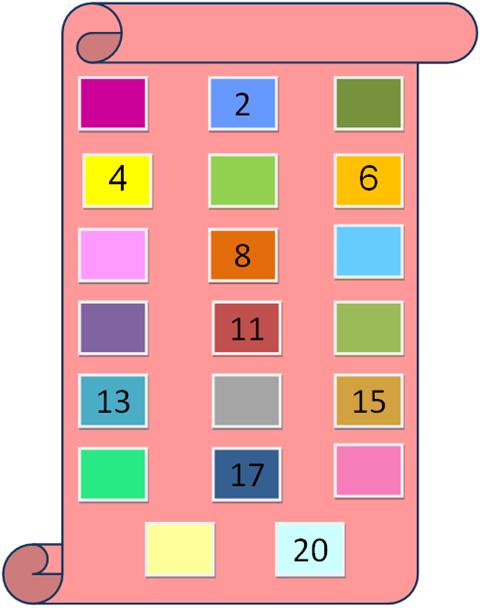
New! Comments
Have your say about what you just read! Leave me a comment in the box below. Ask a Question or Answer a Question.